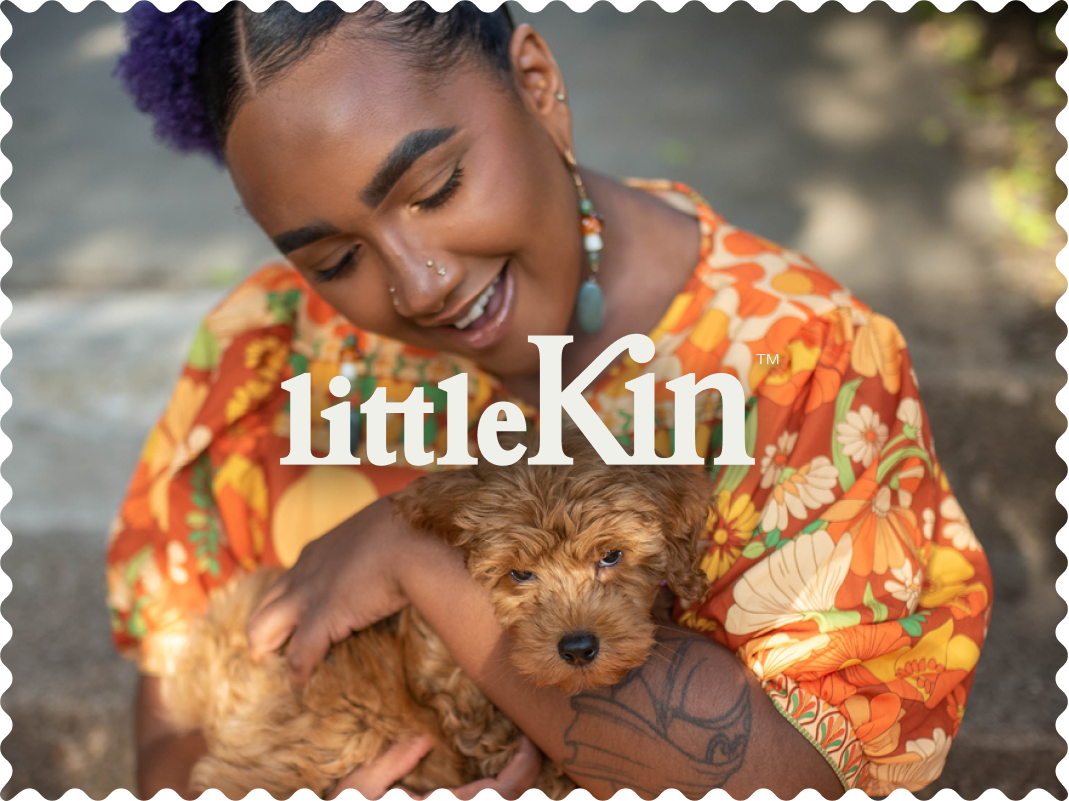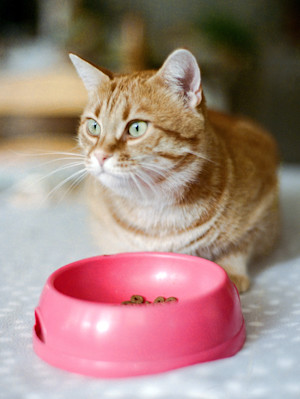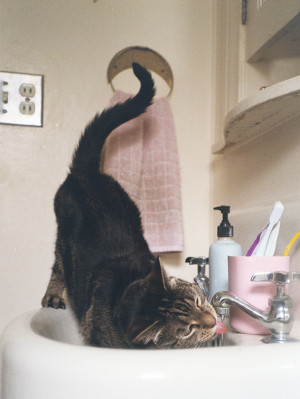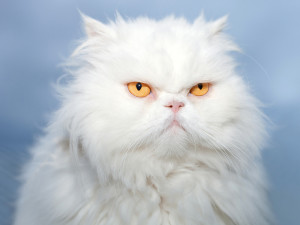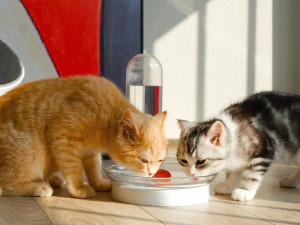Why Does Your Cat Drink From Everywhere Except Their Water Bowl?
It’s the elixir of life... but with conditions

Share Article
It’s a familiar scene for many cat parents. You pour fresh water into your cat’s bowl – it’s clean, full and sitting right where it always is, and yet your cat strolls past it like it’s completely invisible, only to later leap on to the bathroom sink and impatiently meow at you until you turn the tap on.
Or maybe they stick their head into your glass of water the second you look away. Or they wait – every single time – for you to finish in the shower so they can sip from the drips in the tub (sorry kitty, it’s giving Saltburn).
In my household, it’s Kobe the four-year-old tomcat who is the pickiest of drinkers. He won’t touch a water bowl, no matter how fresh or fancy. Instead, he’s developed a strict personal policy: all hydration must come from a slow trickle straight from the bathtub tap. Without fail, he races in after me every time I go to the loo, jumps straight into the tub, and waits expectantly until I turn the tap on just enough to drip. Only then will he lower his head and drink – happily, and only from that specific spot. Cat fountains? Not a chance. Kobe has standards.
So what gives? Why do so many cats seem to prefer literally anywhere else over the perfectly good water bowl you so thoughtfully chose, filled and set out for them?
As it turns out, this odd little quirk isn’t just your cat being difficult (well, not entirely). It’s actually got a lot to do with instinct, evolution and how cats experience the world around them – right down to their sensitive whiskersopens in new tab and sense of tasteopens in new tab. If you’ve ever wondered what’s going on in that mysterious feline mind when it comes to drinking habits, you’re not alone. Let’s dive into the surprisingly fascinating reasons cats choose the tap over the bowl, and how you can help them stay happily hydrated.
Evolutionary instincts
This seemingly bizarre pickiness when it comes to water sources is actually a deeply ingrained survival instinct for cats.
Just like their wild ancestors, domestic cats have evolved to associate still wateropens in new tab with potential danger. In the wild, a stagnant pool can be a breeding ground for bacteria, parasites and all kinds of nasties. Flowing water, on the other hand, is seen as cleaner, fresher and far less likely to cause illness – it’s all about survival.
“Running water may seem more appealing due to the fact that it will seem fresher and therefore the cat deems it safer,” explains animal behaviourist and veterinary nurse Zoe Blakeopens in new tab. “It is not in a cat’s interest to ingest something that may potentially lead to illness, which can make it more vulnerable to an enemy.”
It’s not just what the water looks like – cats can taste the difference too. “Still water will become stale and easily start to trap dirt and debris,” Zoe says. “Cats will taste the impurities in still water, so they choose a running source.”
This behaviour is so instinctive that even the fanciest filtered bowl won’t always cut it. Many cats will ignore their designated water station entirely if it’s not in a location or form they feel confident about. And unlike dogs, who will happily slurp from any grimy puddle they come across, cats just won’t drink if the conditions aren’t right. “Sadly, they don’t have a high thirst driveopens in new tab,” Zoe notes. “So if their water isn’t in a favourable vessel, they won’t be bothered to find another source.”
And then there’s the copycat factor (literally). Cats are notoriously curious and keen observers. If you use the bathroom tap or take a long shower, don’t be surprised if your feline sidekick joins you, not for moral support, but because they’ve noticed where the water comes from. “Being quite curious creatures, they may also pay interest to taps if they see us interacting with them,” Zoe says.
Other reasons your cat may not drink from their bowl
Cats can have a laundry list of issues with their everyday water bowl set-up, and while evolutionary instincts play a big part, there are also a few very practical reasons your cat might be snubbing their dish.
For starters, cats are surprisingly picky about how their water tastes. “Cats are very sensitive to taste and will naturally avoid water that is tainted or stagnant,” explains Zoe. That perfectly clean bowl on your kitchen floor? If it’s been sitting there for even half a day, your cat may already consider it stale.
Then there’s the matter of the bowl itself. While it might seem insignificant, the material of the bowl can make a big difference (more on that later). “Plastic water bowls often lead to an unpleasant taste,” says Zoe, noting that some cats will avoid plastic altogether. And shiny metal bowls? They can reflect light or movement, which some cats find off-putting.
Worse still, if your cat wears a collar with an ID tag or GPS tracker, those little accessories can clatter against the side of the bowl, creating sounds that might be startling or irritating. “Anything that may hang from a collar or clank the bowls could make unpleasant sounds that they would want to avoid,” Zoe says.
Beyond their sensory quirks, cats are also just not designed to drink a lot of water. “Cats actually don’t require too much fluid intake,” Zoe explains. “Their wild ancestors would have gotten most of this from the prey that they consumed.” That natural low thirst drive means many cats are simply not great at drinking unless they’re truly compelled to.
The strange case of whisker fatigue
Your cat’s whiskers are deeply embedded in the skin and connected to the nervous system, making them crucial for a cat’s spatial awareness. They help them navigate their environmentopens in new tab, measure spaces and detect nearby objects, which means they’re also highly sensitive.
When a cat’s whiskers are constantly in contact with objects or experience excessive stimulation, such as during prolonged periods of exploration or when the whiskers are repeatedly brushed or pressed against surfaces (like a water bowl), it can lead to sensory overload and is known as ‘whisker fatigueopens in new tab’.
“This irritating sensation can mean they will avoid there water bowls and look for other for water sources, like a dripping tap or puddle,” says Zoe. Because each whisker is equipped with proprioceptorsopens in new tab (special sensory organs) at the base, which send tactile signals to the brain, when these important sensory tools are overused, it can lead to discomfort, disorientation or stress for your cat. Symptoms of whisker fatigue may include pawing at the face, reluctance to move or a general sense of unease.
What about placement of the bowl?
“When a cat is stationary drinking or eating, they are put in a vulnerable position because they’re distracted from any upcoming danger,” says Zoe. Free roaming cats will spend their whole life focused on danger and this evolutionary instinct hasn’t necessarily left our domestic cats.
“Locations where the cat cannot be ambushed or snuck up on are ideal spots to place their water bowl,” says Zoe. “They will avoid areas where appliances may move or make noise and it is also important that their eating and drinking zones are separated. It is believed that this stems from a desire to avoid water sources that may be contaminated from waste products or the gut contents of prey.” Nice.
When should I worry that my cat is not drinking enough?
Cats aren’t always great at letting us know when something’s wrong – and that includes when they’re not drinking enough. According to Zoe, dehydration can be surprisingly common, especially in senior cats. “In fact, older cats can sadly live sub-clinically dehydrated,” she explains, meaning they might not show obvious signs until it starts affecting their health.
So what should you look out for? “Signs that may be seen would be dry, sticky gums, lethargy, skin tenting, reduced appetite, decreased volumes of urine and urine that is dark and smells strong,” says Zoe. These are all indicators that your cat might not be getting the hydration they need.
This is why diet matters too. Cats on an all-wet food diet often get a decent portion of their daily hydration through their meals. But for those who eat dry food – or even just a mix – encouraging extra drinking becomes much more important. As Zoe puts it: “Cats fed exclusively wet foods will drink much less than a cat that has at least some portion of its intake obtained from dry food. Encouraging drinking is therefore important for dry food eaters.”
Are there any underlying health problems that can be linked to hydration issues?
It’s also worth knowing that certain health conditions, like chronic kidney disease, diabetes and feline lower urinary tract disease, can either cause or worsen dehydration. In these cases, encouraging your cat to drink more isn’t just helpful, it’s essential for managing their condition.
“If a cat is drinking significantly more or less than usual, it pays to seek advice from your vet,” cautions Zoe.
Chronic kidney disease (CKD)
“This is one of the most common conditions affecting senior cats. When a cat‘s kidney function deteriorates, they can’t concentrate urine properly, so they urinate more and get dehydrated faster – leading them to need to drink more.
Diabetes
“In diabetic cats, high blood sugar causes them to urinate more, which increases thirst. Excessive drinking and peeing are major warning signs.”
Hyperthyroidism
“This condition speeds up metabolism and can cause an increase in thirst and urination, along with weight loss and restlessness – especially in older cats.”
Urinary tract issues
“Cats with UTIs or bladder problems may avoid drinking because it hurts to pee, or they may drink more to try to flush things out. Either way, it’s a hydration concern.”
Liver disease or cancer
“Both liver disease and cancer can affect a cat’s appetite and thirst drive, sometimes causing dehydration due to vomiting, diarrhoea or general weakness.”
Dehydration from illness or heat
”Even short-term illness (like vomiting, diarrhoea or fever) or overheating can change a cat’s hydration status and should be monitored closely.”
How to encourage your cat to drink water
If your cat has decided their water bowl is the enemy, don’t worry, you’re not alone, and there are things you can do to help. Encouraging cats to drink more is often about making small changes that suit their quirks, instincts and very particular preferences.
One of the easiest and most effective fixes? Try a cat water fountain. “As moving water is more attractive to many cats, using a water fountain or giving them access to a dripping tap could be very beneficial,” says Zoe. These mimic the sound and movement of a natural stream, something cats instinctively trust more than a bowl of still water.
But it’s not just about how the water moves, it’s also about what it’s in. “It is always best to choose glass or ceramic over metal and plastic,” Zoe advises. Cats’ strong sense of smell can make plastic bowls off-putting, and metal ones might reflect light or move slightly, which can be unsettling. If you don’t want to splash out on a new pet-specific dish, Zoe’s tip is simple: “Just go into your kitchen cupboards and use things like pasta bowls or Pyrex casserole dishes. Think wide-mouthed, and remember to keep them full to the brim.”
That visibility matters more than you might expect. “Cats like to see the top of the water,” says Zoe. “They often don’t like to put their face into a water source if they cannot detect the surface. Which is often why you see a cat walk up to a water bowl and walk away, even though there’s water in there.”
Make sure your cat has access to multiple water sources around the home, especially in multi-cat households, where some pets might feel bullied away from shared resources. “All cats within the household should have free and readily available water at all times without having to be terrorised by other cats,” Zoe explains. This is especially important for kittens, older cats, or those with mobility issues who may not want to travel far to find a drink.
And if your cat still isn’t interested? Try enhancing the flavour. “Offering fish or chicken stock, by boiling fresh meat and using the water, can encourage drinking,” says Zoe. You can also add water directly to their food to create a soup-like consistency. Just be sure to avoid shop-bought stock cubes, which often contain onion powder or salt that can be toxic to cats.
In short, hydration doesn’t have to come from a plain old bowl. With a few thoughtful tweaks, you can turn even the pickiest drinker – and bathroom stalker – into a well-hydrated cat.
Frequently asked questions
Why won’t my cat drink from their water bowl even when it’s clean?
Cats are incredibly sensitive to taste, smell and even sound – plastic can alter the taste of water, metal bowls can make clanging noises, and still water may seem stale or unsafe compared to running water.
Is it normal for my cat to prefer drinking from the tap or bath?
Yes, totally normal! Many cats instinctively trust moving water more than still water, thanks to their evolutionary history where running water was safer and less likely to carry disease.
What’s the best type of water bowl for cats?
Wide, shallow ceramic or glass bowls filled to the brim are ideal – these reduce whisker stress and allow your cat to see the water’s surface clearly.
How can I tell if my cat is dehydrated?
Look out for signs like dry gums, lethargy, strong-smelling urine or reduced appetite. If in doubt, always check with your vet – dehydration can be a symptom of underlying health issues.
Do cat water fountains really help?
Yes! For many cats, water fountains are a game-changer, mimicking the flowing water they’re naturally drawn to and encouraging better hydration, especially in cats on dry food diets.
Resources
Beynen, A. C., et al. “Effect of Water Source on Intake and Urine Concentration in Healthy Catsopens in new tab.” Journal of Veterinary Behavior, vol. 5, no. 2, 2010, pp. 71–76.
Breer, Heinz, et al. “Chemical Senses in the Domestic Cat: Recent Insights into Olfaction and Tasteopens in new tab.” Chemical Senses, 2023.
Stevens, Britt. “Why Do Cats Avoid Still Water? An Exploration of Hydration, Evolution, and Behavioural Factors in Domestic Catsopens in new tab.” Master’s thesis, Ghent University, 2021.
Gunn-Moore, Danièlle, et al. “Whiskers as Sensory Tools: The Science of Whisker Fatigue in Catsopens in new tab.” Frontiers in Veterinary Science, vol. 10, 2024.

Ro Elfberg
Ro previously served as Kinship’s Senior Editor. Now a freelancer, she has written and copy-edited for British Vogue, Glamour, DICE and of course, Kinship. When she’s not being manipulated into dishing out Dreamies to Kobe the cat, she spends her free time trying to convince her snake, Butters, to wear a tiny hat.
Related articles
![a picture of a ginger cat sitting in front of a pink plastic bowl with biscuits in]()
‘Whisker Fatigue’ Could Be The Reason Your Cat Isn’t Eating
It’s not just another way for your cat to exhibit diva-esque tendencies
![Tabby cat leaning into a porcelain sink, tail curled in the air, as it sticks its tongue out to drink water from the faucet.]()
Why Is My Cat So Damn Thirsty?
No, not like that. They’re literally drinking a lot of water. Here’s when you should be worried
![White Persian cat on a blue background]()
UTIs Are Rubbish For Your Cat, Too
Here’s how to help them get relief
![Two cats drinking from a KittySpring Combo water fountain on the floor]()
Best Water Fountains for Cats
Fresh, flowing water will keep your pet hydrated, ward off UTIs and reduce water waste
![Person with short hair putting water bowl on floor for cat]()
8 Ways to Get a Cat to Drink Water
Their desert-dwelling roots might resist hydration, but these tricks can help
